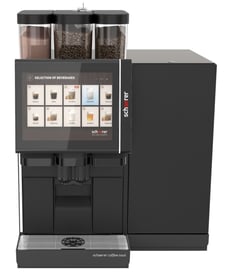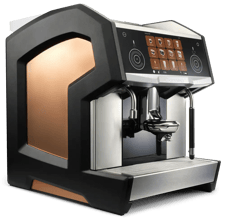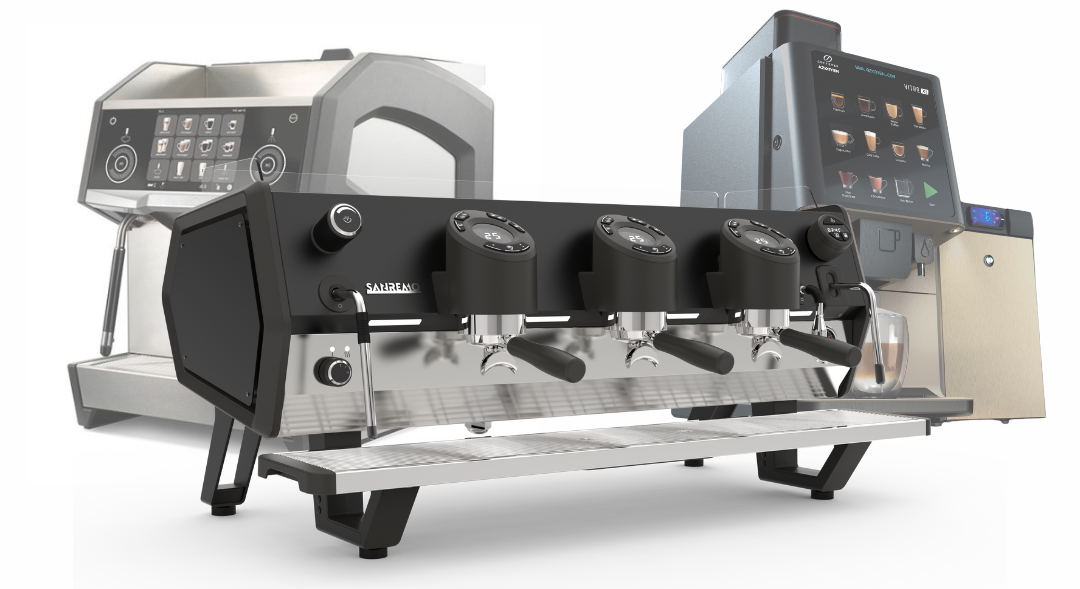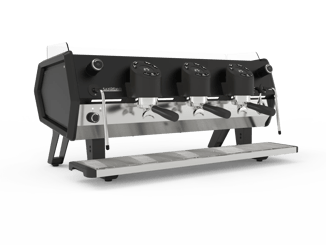10 October 2025
Commercial Coffee Machines - Daily Drink Volumes, Explained
Jack Merriman
Digital Marketing Manager
When choosing a commercial coffee machine, one of the first questions that comes up is: “How many drinks per day can it make?”
The answer isn’t as simple as a single number. Every machine is built for a certain workload, and understanding daily volume is key to ensuring smooth service, consistent drinks, and long-term reliability. In this short article, we're explaining what people mean when they talk about a coffee machine's daily drinks volume, why it matters, what really matters, and how to know if you're pushing your machines past their limit.
First, Why Does Drink Volume / Machine Capacity Matter?
Every coffee machine has limits. A model designed for 100 cups per day will run for years in a small showroom, bar or office kitchen. Put the same machine in a busy café doing 300+ drinks daily, and you’ll soon face breakdowns, inconsistent drinks, and frustrated staff.
Volume isn’t just about protecting the machine. It directly impacts:
- Drink quality and consistency
- Customer wait times and service flow
- Maintenance costs and machine lifespan
How the Coffee Industry Talks About A Machine's Drink Capacity
In the coffee industry, machine output is usually measured in cups per day. Manufacturers will often state a recommended daily volume, for example, 75 cups, 150 cups, or 500+ cups per day.
This is a useful benchmark, but it doesn’t always tell the whole story. Real-world service rarely looks like a steady stream of drinks across a 12-hour day.
What Really Matters?
When you’re assessing whether a machine can handle your workload, there are a few crucial factors to think about beyond total cups per day:
Busiest Hour
A 150-cup machine might cope fine if drinks are evenly spread out. But if all 150 drinks are ordered during the morning rush, it will struggle. The true test is whether your machine can handle your busiest hour.
Speed of Making One Drink
A machine that can prepare an espresso in 20 seconds will keep up better than one that takes 40, even if both are rated for the same daily volume.
Drinks Per Hour
Think about peak hourly output, not just daily totals. This is where many businesses underestimate their needs.
Workflow and Barista Flow
The way your baristas use the machine matters. If staff are waiting on milk to steam, struggling with tamping, or fighting the queue for the grinder, volume capacity drops.
Ease of Use
Machines that simplify the process, through automation, touchscreens, or milk systems, reduce bottlenecks and keep service moving.
How Many Coffees Can Your Machine Make?
There is no industry standard measure for the number of coffees a machine should be able to make, so the term 'cups per day' is less a statistical fact and more a guideline for what kind of business and service volume a machine will suit. This number is often provided as a 'technical specification' by the manufacturer.
Typically, coffee machines with higher 'cups per day' ratings from the manufacturer will likely use more power, have a greater number of boilers or heating elements, and use higher quality materials, which all enable greater performance in terms of temperature stability, recover-ability, and steam capacity. This is to say, a more capable machine that won't slow down, or cool down, during busy service.
Espresso Machines
Traditional espresso machines provide fantastic value for money when it comes to pure drinks capacity, usually offering anywhere from 200-1000 cups per day.
The modern entry level espresso machine in our lineup, the Sanremo D8, is fantastic for businesses serving anywhere up to 300 cups per day.
As a single boiler machine, however, businesses going above this volume may start to notice a weaker steam pressure, and a slight reduction in drink quality due to temperature fluctuations.
 Bean-to-Cup Machines
Bean-to-Cup Machines
Bean-to-cup machines have many moving parts, and have many more jobs to complete including grinding beans, heating milk, and dispensing of used coffee grounds.
These machines vary greatly in their capacity, but a fantastic option like the Schaerer Coffee Soul is perfectly capable of delivering up to 200-300 cups per day.
Super Automatic Machines
Super automatic machines take automation a step further than standard bean-to-cup models, managing everything from grinding and tamping to milk texturing and cleaning cycles. This makes them ideal for businesses looking to deliver barista-quality coffee with minimal staff input.
A leading option, such as the Eversys Cameo, can comfortably handle between 250–400 cups per day while maintaining exceptional consistency. These machines are designed for speed and precision, producing a wide range of drinks at the touch of a button.
Signs Your Machine Isn’t Keeping Up with Capacity
If you’re wondering whether your machine has outgrown your business, look out for these warning signs:
- Long queues during busy times
- Inconsistent drinks (temperature, flavour, milk texture)
- More frequent breakdowns and repairs
- Staff frustration and slower workflows
- Customers waiting longer than they should
Discover the Perfect Machine for Your Needs
Choosing the right machine capacity is only half the story. The real difference comes when you find a model that fits your service style, peak demand, and long-term goals. From compact bean-to-cup systems to high-volume superautomatics and traditional espresso machines, we’ve got options for every business.

How to Increase the Daily Drinks Volume of Your Machine
If your machine is under pressure but you’re not ready to replace it yet, there are ways to relieve the strain and boost overall output:
Use support equipment, Adding a separate hot water boiler or a dedicated hot chocolate machine frees up the coffee machine’s boiler and reduces waiting times.
Optimise barista workflow, Tools like automatic tampers, milk systems, or better grinders speed up service and make life easier for staff.
Increase machine power, In some cases, upgrading the power supply or boiler size improves recovery times and helps the machine handle higher peaks.
Knowing When It's Time to Upgrade
There comes a point when no amount of tweaks will make up for a machine that’s simply too small for the job. If you’re consistently hitting capacity, or service standards are slipping despite workflow improvements, it’s time to invest in a higher-volume model.
A machine that matches your busiest hour, not just your daily average, will protect quality, reduce downtime, and future-proof your coffee service.
Daily volume is one of the most important factors when choosing a commercial coffee machine. But it’s not just about cups per day, it’s about how those cups are served, the speed of preparation, and the workflow around the machine.
If you’re seeing the signs that your setup is struggling, now is the time to act. The right machine, with the right supporting tools, will make service faster, smoother, and far more reliable.
Invest in the right coffee machine with Bridge Coffee Roasters
At Bridge Coffee Roasters, we help businesses match their coffee setup to their daily volumes, peak hours, and long-term goals. From independent cafés to large hotels, we’ve guided hundreds of businesses towards machines that deliver consistency, reliability, and a better customer experience.



